Áísínai'pi National Historic Site of Canada
Aísínai'pi was designated a national historic site in 2004.
Commemorative plaque: 49° 05'; -111° 37', Writing-on-Stone Provinicial Park, AlbertaFootnote 1
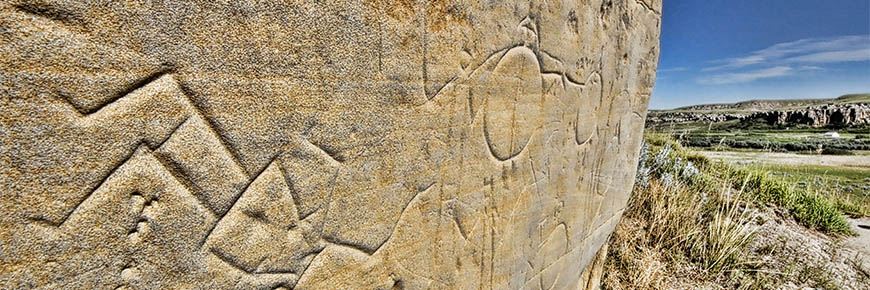
© Alberta Parks / John Novotny
Aísínai'pi "it is pictured, it is written" is one of the most important sacred places for the Niitsítapi (Blackfoot). Here, Niitsítapi seek the guidance of the Spirit Beings that dwell in the hoodoos and among the nearby hills, known as Kátoyissiksi. Their messages take the form of pictures carved into and painted on the sandstone cliffs. Other images are biographic, recording the exploits of the artists' lives. Aísínai'pi has one of the largest concentrations of rock art on the Great Plains, including the most complex and intricate compositions in the region. For the Niitsítapi, this cultural landscape is a vibrant and enduring expression of the meeting of the physical and spiritual worlds.
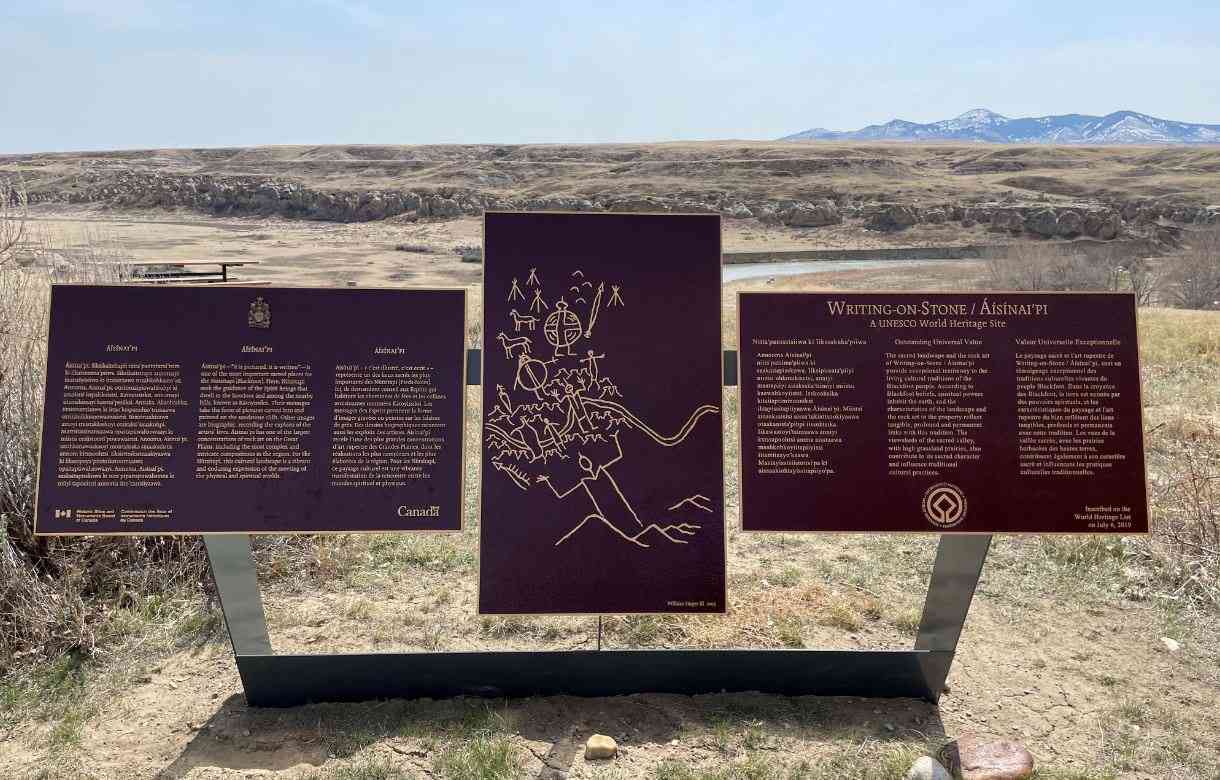
© Photo courtesy of Alberta Parks
Description of historic place
Áísínai'pi National Historic Site of Canada, also known as Writing-on-Stone Provincial Park, is located on the Milk River in southern Alberta 150 km east of the Rocky Mountains. Set in a region of rolling mixed grass-prairie near the northern limits of the Great Plains, the Milk River and its tributaries are deeply incised into the surrounding grassland creating dramatic vertical sandstone cliffs above and overlooking the river. The sandstone cliffs, caves and hoodoos are the canvas for extensive rock art that consist of carvings (petroglyphs) and paintings (pictographs) that commemorate vision quests and record significant events of the Niitsítapi or Blackfoot from approximately 4000 BCE until the early 20th century. The site provides spectacular views of the Poyíítahtai valley and the surrounding landscape. Official recognition refers to the land circumscribed by the boundaries of Writing-on-Stone Provincial Park, which comprises 1718 hectares, with its many archaeological and rock art sites.
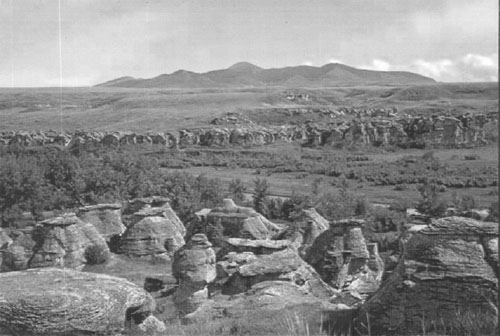
© Parks Canada, 2002

© Parks Canada, 2002
Heritage value
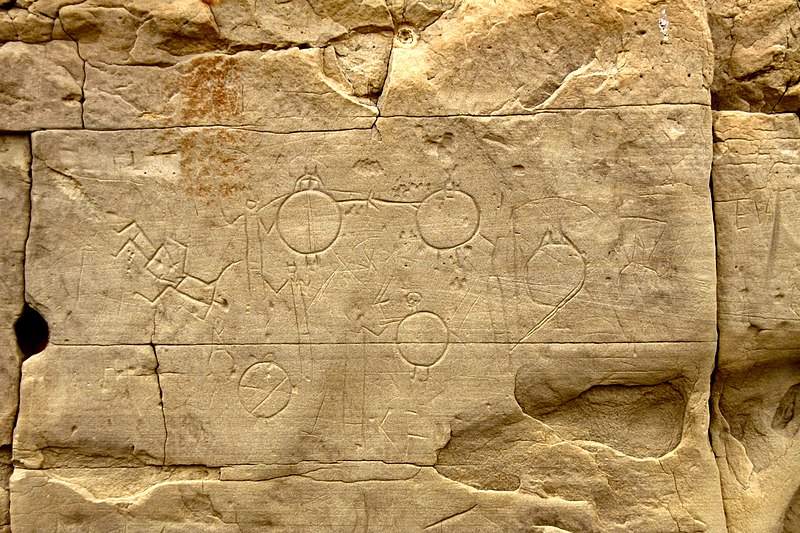
© Matthias Süßen / Wikipedia commons / 2011
Áísínai'pi was designated a national historic site of Canada in 2005 because: it is one of the most important sites in the sacred geography of the Niitsítapi. Spirit powers are associated with the rock formations and the view towards the nearby hills known as Kátoyissiksi. The rock art at Áísínai'pi is an expression of the meeting of the spirit world and the physical world; and, it contains the largest concentration of rock art images on the Great Plains, with some panels exhibiting the most complex and intricate narrative rock art compositions in the region.
Áísínai'pi (“it is pictured or written”) represents one of the most significant places in the cultural and sacred geography of the Niitsítapi (Blackfoot people). Oral traditions describe the ancient history and spirit powers found at Aísínai’pi. In addition, history and sacredness are represented by numerous rock art images carved and painted on the sandstone cliffs lining the Milk River. The rock art is an expression of the meeting of the spiritual world and the physical world. Most of the images date to the period before contact with Europeans and are representational, depicting human, animal figures and objects in an often schematic and highly conventionalized manner. Images; static and ceremonial or active and biographic; include shield-bearing warriors, deer, bison, antelope, birds and mythical animals such as the Thunderbird.
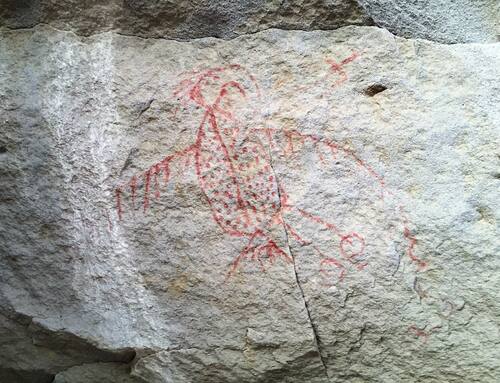
© Photo courtesy of Alberta Parks

© Photo courtesy of Alberta Parks
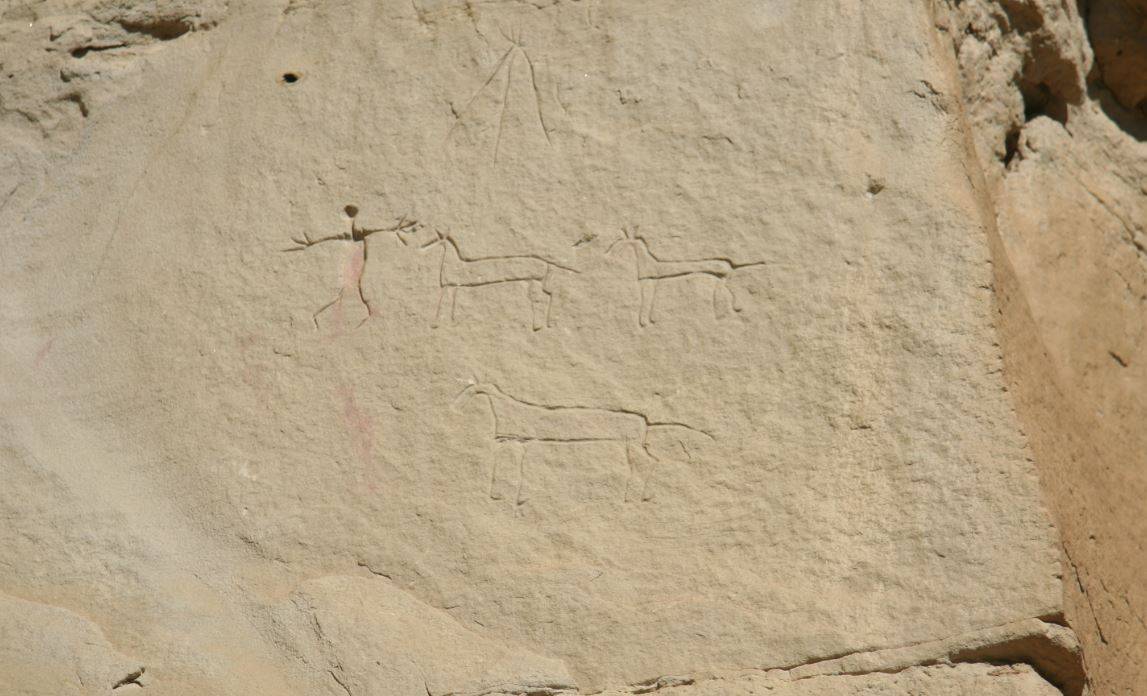
© Photo courtesy of Alberta Parks
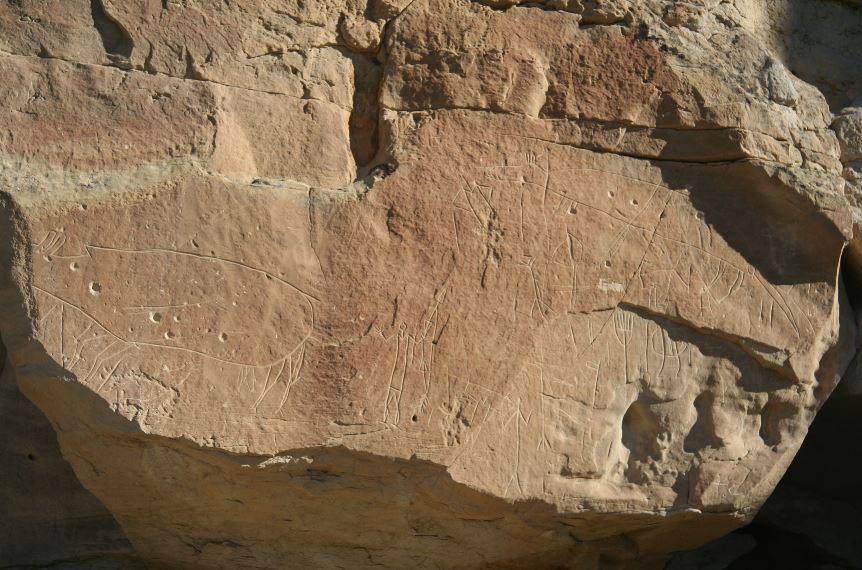
© Photo courtesy of Alberta Parks
The images and motifs may be simple and isolated or arranged across the surface in animated complex “scenes” depicting ceremonies or battles. Later depictions include horses and other datable objects of European origin. This visible and evocative symbol of Indigenous history is considered a sacred landscape intimately related to the presence of Kátoyissiksi, a significant feature in the sacred geography of the Niitsítapi. The dramatic sandstone cliffs and formations that constitute the site are considered by the Niitsítapi to host many powerful beings and have long provided an abundance of important vision quest locations. Even though the rock art is an important spiritual and cultural legacy, it is inseparable from the broader cultural landscape of Áísínai'pi.
Sources: Historic Sites and Monuments Board of Canada, Minutes, July 1971; Submission Report, Dec. 2003.
The National Program of Historical Commemoration relies on the participation of Canadians in the identification of places, events and persons of national historic significance. Any member of the public can nominate a topic for consideration by the Historic Sites and Monuments Board of Canada.
Related links
- Date modified :
